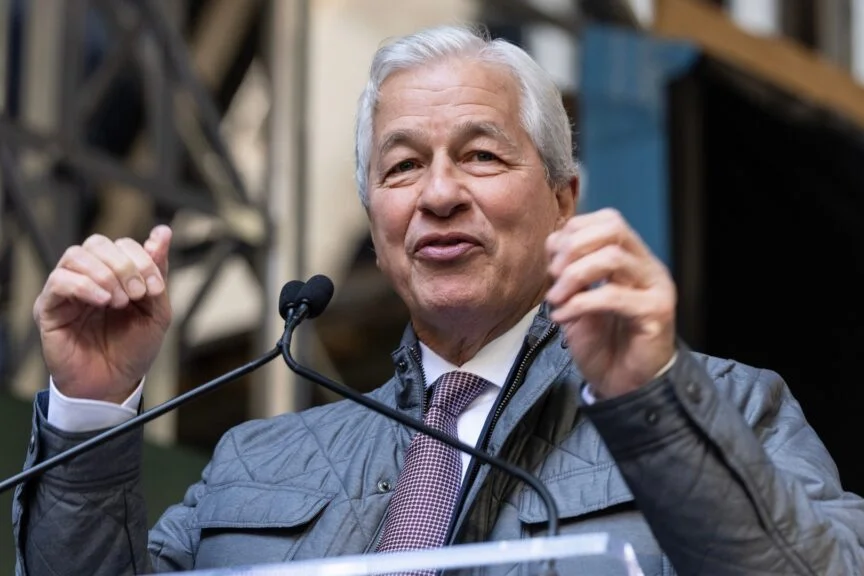Copyright Benzinga

Fresh fears of mounting credit stress in the U.S. banking system have resurfaced after JPMorgan Chase & Co. (NYSE:JPM) CEO Jamie Dimon issued a stark warning that more financial trouble could be lurking below the surface. "When you see one cockroach, there are probably more," Dimon said during last week's earnings call, referring to the recent bankruptcies of First Brands—an auto parts maker reportedly under criminal investigation—and Tricolor Holdings, a subprime auto lender. On Wednesday, just a day after Dimon’s warning, concerns deepened as Zions Bancorporation (NASDAQ:ZION) disclosed a $50 million charge-off tied to two troubled commercial loans from its California Bank & Trust unit. A day later, Western Alliance Bancorporation (NYSE:WAL) revealed it had filed a fraud lawsuit against a borrower, adding to the sector's unease. Now, with regional banks and private equity showing signs of strain, Wall Street is bracing for what could be the next major shock to markets. Why Treasury Bonds Could Make A Comeback As Liquidity Tightens While many analysts believe these credit issues remain contained, the broader market may still be vulnerable—not because of credit exposure, but because of liquidity. Savita Subramanian, head of U.S. equity strategy at Bank of America, says regulated banks today are better capitalized and less likely to spark a full-blown credit crisis. However, she cautions that the S&P 500’s high concentration in a few large-cap tech names could make it more sensitive to liquidity shocks. That's echoed by Michael Hartnett, chief investment strategist at Bank of America. In a recent note, he warned that “Krunchy Kredit” cracks are spreading, pointing to weakness in the SPDR Regional Banking ETF (NYSE:KRE), private credit, and the SPDR Insurance ETF (NYSE:KIE). He added that if key financial benchmarks drop below critical levels, the Fed could be forced to cut more aggressively. Hartnett is also turning bullish on bonds, suggesting that zero-coupon U.S. Treasuries could be the best hedge for credit event risk, with long-dated yields expected to fall below 4% amid Fed easing and global policy shifts away from quantitative tightening. The PIMCO 25+ Year Zero Coupon US Treasury Index ETF (NYSE:ZROZ) and the iShares 20+ Year Treasury Bond ETF (NASDAQ:TLT) are up 3.5% and 2.5%, respectively, thus far this month. Analysts Also Flag Russell 2000 Puts According to Jeff Jacobson, analyst at 22V Research, buying put options on small-cap stocks—tracked by the iShares Russell 2000 ETF (NYSE:IWM)—may be the best hedge if credit stress continues. IWM has traditionally had a strong correlation with regional banks (KRE) and private credit, both of which are flashing warning signs. Jacobson highlighted that while IWM outperformed both the SPDR S&P 500 ETF Trust (NYSE:SPY) and Invesco QQQ Trust (NASDAQ:QQQ) between August and mid-October, much of that gain was driven by capital goods, health care, software, tech, and utilities. At the same time, unprofitable small caps have outperformed their profitable peers—possibly a sign of speculative AI-related flows entering riskier territory. This divergence, he notes, could leave IWM vulnerable to a snapback if credit fears deepen and speculative excess unwinds. Bottom Line: How to Protect Your Portfolio As credit risks resurface—particularly in mid-sized banks and private credit markets—investors should stay on alert. Key financial benchmarks like KRE ETF, the Financials Select Sector SPDR Fund (NYSE:XLF), and KIE ETF can offer early signals of deeper stress in the system, and watching their movements may help identify mounting pressure in the sector. Long-duration Treasury bonds are increasingly viewed as potential hedges in the event of a broader liquidity stress, offering both safety and potential upside if yields fall further. So far, the damage has been limited to a few lenders. But if Dimon's "cockroach" metaphor proves accurate, the market may not be fully priced for what's still hiding in the shadows. Read Next: Retail Investors’ Top Stocks With Earnings This Week: Tesla, Netflix, Intel and More Photo: lev radin / Shutterstock.com



